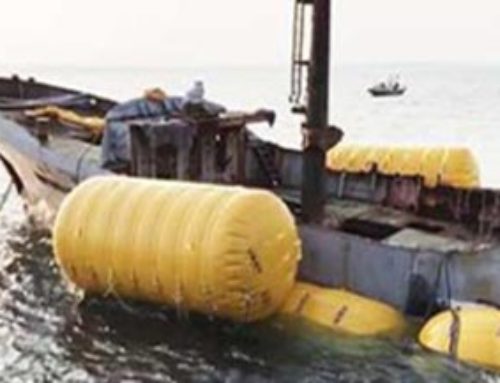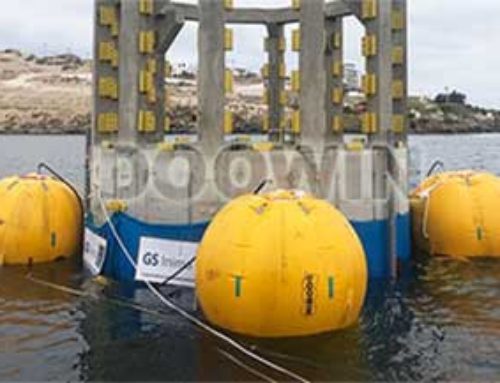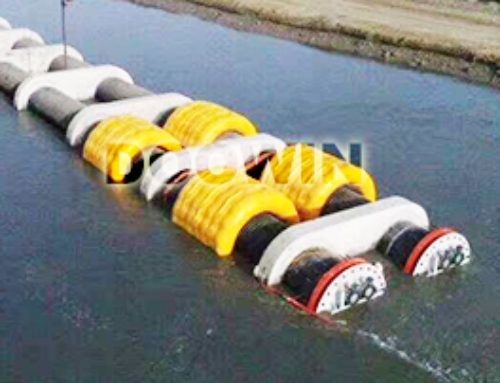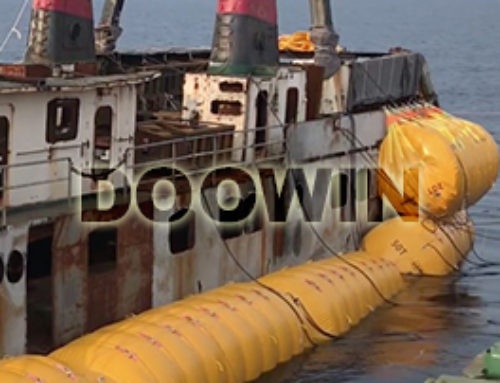DOOWIN pipeline buoyancy units were used for the world’s first ultra-large and ultra-long HDPE double-tube shipping and installation.
Recently, a super flexible HDPE submarine pipeline with a length of 558.2 meters and a weight of 1,315 tons was commercialized at the commercial port of the Saudi Arabian Sea City. It successfully adopted double-tube shipping to achieve seamless underwater docking and became the world’s first super flexible HDPE submarine pipeline. Double pipe shipment installation.
This project was finished by The Second Engineering Company of CCCC Fourth Harbor Engineering Co.,Ltd
Data flow: Where is the difficulty in installing dual-tube shipments?
The installation of HDPE submarine pipelines is the first in the world.
The climatic conditions of the construction site are complex, and the wave height of more than 0.5 meters has an impact on the pipeline transportation, and the installation accuracy requirements are very strict.
A single strip of HDPE pipe requires 190 welds. A total of 4,976 welds are required to install all the pipes, and each weld must be completely seamlessly joined.
The underwater installation is the deepest into the water 11 meters.
Let’s explore the three difficulties of dual-tube shipping installation!
Difficulties 1: Hard to ship on land

HDPE pipe pre-docking on shore
HDPE single pipe is 558 meters long and the total length of double pipe is 1116 meters. It is the world’s first in single shipment. The single pipe has a diameter of 1.8 meters and is currently the second largest in the world. The double pipe is welded by 186 standard pipes, and weighs 1,315 tons.
Such a huge pipe from land to sea requires multiple equipment to work together. Onshore winch, offshore tug, tube tail loader.
Such a behemoth must be interlocked, with the same force, uniform speed, and slight accidental damage.
Difficult 2: Difficult to haul at sea
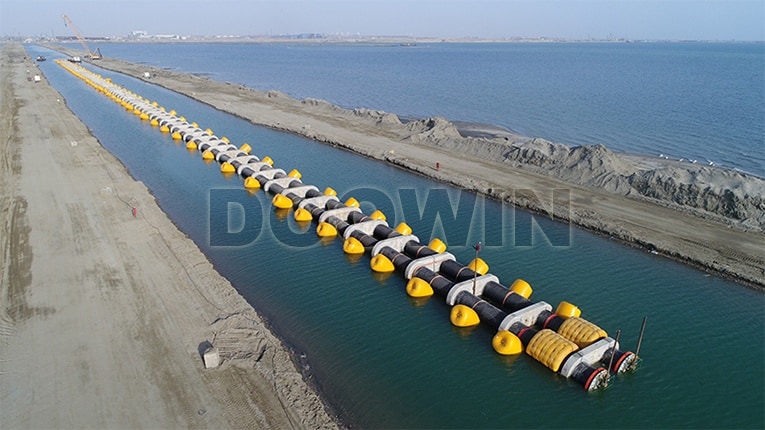
HDPE team preparation at sea Double pipe pulling
The double pipe shipment needs to be adjusted by positioning, car recycling, sea hauling, entering narrow basement and so on. The pipeline needs to travel 9 kilometers long distances at sea and stay up to 8 hours on the sea. Dust storms, gusts, big waves and other bad weather around the Red Sea are high, making the risk of pipeline hauling heavy.
Difficulties 3: Pipe docking is difficult
The total length of the pipeline is more than 14 kilometers. It is divided into 17 installations and requires 15 double pipe docking under the sea. Docking requirements are seamless and cannot be biased. After the docking is completed, the pipeline is filled with water and the axis is precisely aligned. In the absence of wind and waves, it is still necessary to work continuously day and night, and the work intensity is very large.
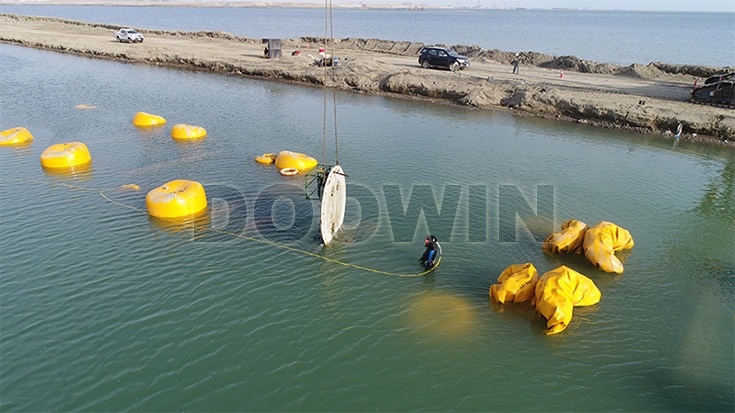
Technological innovation
Creativity will move the docking at sea to the shore, and make a “pre-docking” adjustment on the land to ensure that the two interfaces can be seamlessly connected. At the same time, in the docking phase at sea, the combination of divers and high-precision GPS is adopted to monitor and adjust the whole process to ensure accurate positioning of pipelines and meet the requirements of design specifications.
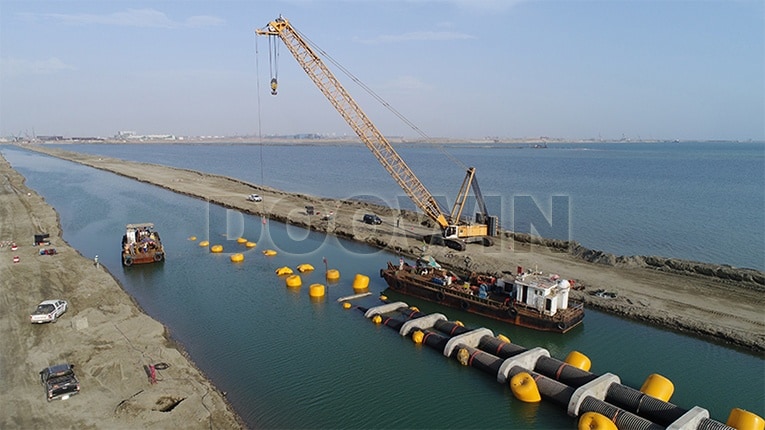
The fruits of the victory of the CCCC Four Harbor Engineering
The flexible HDPE submarine pipeline project has been listed as one of the three technical difficulties in the construction of the Saudi Jizan Economic City. The CCCC Four Harbor Engineering have overcome this world-class problem through independent and independent technology research and development. The designers of the Economic City have found it difficult for the Europeans and Americans. The Saudis have greatly praised the construction of the CCCC Four Harbor Engineering company.


